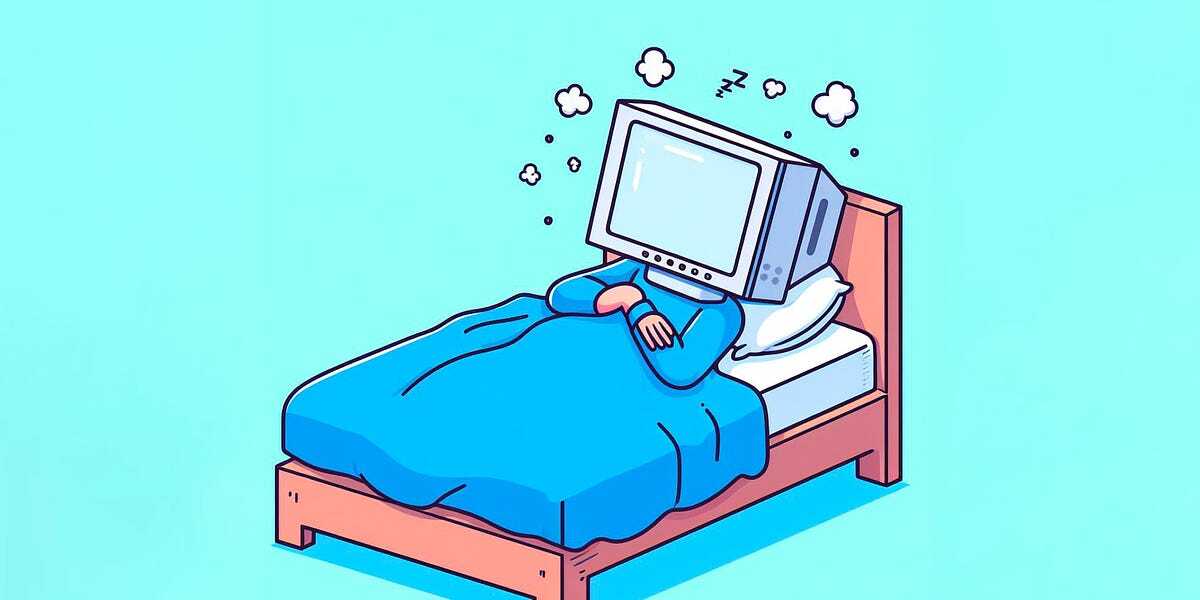- cross-posted to:
- [email protected]
- cross-posted to:
- [email protected]
The gist:
The always-on nature of phones and tablets is incredibly convenient. Wouldn’t it be great if your (non-ARM) laptop or desktop could do this too? Save power when you’re not using it, but still be ready at a moment’s notice?
Microsoft certainly thought so, which is why when Windows 8 was released, it introduced a new feature called Connected Standby. If the hardware indicated support (foreshadowing), instead of telling the BIOS to enter system standby, Windows would enter Connected Standby.
I first ran into the wonders of Modern Standby on my Dell Inspiron 5482, an 8th generation Intel 2-in-1 laptop with a spinning hard drive. After a few months of owning it, I started noticing that it wasn’t sleeping properly. If I closed it, I could still sometimes hear the fans running even 15 minutes later. If I put it in my backpack, there was a good chance I’d take it out at 0% battery or to the fans running at full blast and the CPU dangerously close to overheating. Half the time the hard drive wouldn’t even spin down, which sure is nice when you’re planning to be jostling it around in a bag for a couple hours.
The worst part of this all was that Dell gave you no official way to disable Modern Standby. Windows itself isn’t any help, either. If the BIOS says it supports Modern Standby, Windows takes it at its word and completely disables the ability to enter S3 sleep (classic standby). There’s no official or documented option for disabling Modern Standby through Windows, which is incredibly annoying.
Another issue with Modern Standby is what can trigger wakeup events, and for how long. Supposedly, only certain built-in Windows functions, like updates and telemetry can actually wake the device up, but so can apps installed through the Microsoft Store.
Microsoft probably deserves most of the blame for this mess. It created the feature and has been (allegedly) pressuring vendors to implement it and discontinue support for S3 sleep.
Was running into the same previously. Putting my desktop to sleep only to find it waking up in the middle of the night, and for some reason not going back to sleep afterwards. I believe the solution for me previously was disabling wake timers. Hasn’t been an issue since. However this is a much larger issue on things like laptops where preventing sleep while in a backpack could lead to excessive heat generation. Infuriating that it’s forced by default
Mine also did that, but with the added ‘benefit’ of forgetting how to turn on my graphics card when it did had to wake up at some point without my input.
Fun times…
Half the time the hard drive wouldn’t even spin down, which sure is nice when you’re planning to be jostling it around in a bag for a couple hours.
I’m pretty sure this is what trashed my first laptop. Thankfully I didn’t have a lot of information on there yet and was able to replace the hard drive. But absolutely ridiculous that this passed quality control.
They laid off quality control.
Is that different from … the thing you have to disable in Windows, before you can access the NTFS partition in Linux?
This article is a wall of text spreading fake info. The sleep states work fine in windows if you have any idea how it works. And this has been the case for at least 8 years.
If you have any issue go into cmd type
powercfg -requestsand windows will tell you what is keeping it awake.And doubling down if you really want your pc to wake if its off and you slap your keyboard just tweak your bios wake options and done.
My work issued E15 Ryzen 5000 sleeps and hibernates fine. Plus it lasts a long time in both. I wonder if it’s an Intel bug.
Hibernate is a different function
Yet they’re linked. Still, the machine has zero issues with Windows sleeping.
Isn’t that a Lenovo model? I noticed they weren’t mentioned in the article and wondered if that was on purpose or just an oversight. My cheap IdeaPad also sleeps fine…but it also has an AMD cpu.
Yes. Lenovo E15. Excellent work laptop honestly.
I had the same problem with my work-issued Thinkpad. No overheating, but frequently pulling the laptop out of the bag and finding battery dead. Solution I found was to bind the power-button to “hibernate”, and just using that any time I knew I was going to be putting it away into my bag.
One problem I ran into writing my first Windows Store application like 10 years ago was that Windows Store seemed to have no interest in mobile-style security where you request permissions one-at-a-time and only the ones you need - the intended workflow was that you either requested no secure privs and let your app be “untrusted”, or you made your app “trusted” and requested all the privs. This was actively recommended by MS.
Of course, this means “wake from sleep” would be something that every app would have permission to do accidentally, even if they didn’t want to.
I managed to fiddle around with my work Dell laptop and disable that nonsense. I think it was called “modern standby”. I don’t understand why this isn’t considered a fire hazard. It was terrifying to leave my laptop in my backpack until I figured out the fix.
Yep, while my Extreme Gen 4 has a BIOS toggle, my work-issued T14 Gen 3 does not so I had to get IT to come in and enable hibernate. Prior to that it seemed like it had less battery life sleeping than awake. (ex: fully charged and confirmed that the power light is flashing before flight - few hours later it’s 100% dead.)
This shit is so obnoxious I’ve started having to use hibernate again.
Potentially my mac does the same thing, but it doesn’t wake itself up stealing monitors, running fans at 100%, and becoming a space heater like the two windows computers I have. If it does wake itself up, then I don’t notice.
Hibernate with an SSD is pretty damn good anyway. It’s not always available for some reason though?
Most of the time comes disabled by default. You can easily change it but it’s a shame that it doesn’t come enabled by default
This also happens on Linux, after 20 seconds, my computer just wakes up 😠 (definitely not because I don’t have enough disk space)
I’ve just started turning off my PC when I’m done with it because a mouse farting on the mouse will wake it up. Also if I do manage to get it to sleep it wakes itself up every few hours to check for updates.
This has literally been a problem since Windows ever came into being. I remember long nights of wrestling with this garbage on Jurassic versions of Windows.
Btw, if my pc wakes up seconds after if try to manually via XfCE power menu, but sleeps fine by itself (20 minutes inactivity), what could that be?
Check the BIOS/firmware, there are different sleep states for Windows and Linux that can be configured. Some just refuse to sleep properly. I had a Dell laptop that would sleep and then wake up when I closed the lid and then stay awake.
Check journal, you should see either an error or a wakeup reason
My girlfriend laptop turns on in the middle of the nights for no fucking reason. As a Linux user this shit is creepy
My PC used to do this. I would pull the plug sometimes in order to prevent it from happening
Spotify of all things used to wake my computer from sleep. I was so close to migrating away from them when they fixed it.
Windows also loves to turn itself on for updates, but then not put itself back to sleep after…
Didn’t some tech youtubers talk about this a few months ago? I swear I remember seeing a video on this…
LTT did a big video with all the details.
They can if they don’t use “Modern Standby” or whatever. My Zen 4 PC sleeps just fine, fans stopping and all. Just had to disable allowing network adapters to wake the device from sleep in device manager, else random broadcast messages could cause the standby to end.
deleted by creator
I have one laptop running Windows and I just changed the BIOS/UEFI setting so that closing the display turns off the computer.
Also handy for Linux distros with poor standby/sleep support.
Pretty drastic, I can imagine losing some work accidentally because of that (closing with improper connection to external monitor). Why not hibernate?
Really depends on your devices use case. That isn’t my daily driver and the trade off of not having a dead laptop is worth it for my needs of this device.
I actually like suspend to RAM. Makes my laptop usable after sleep a bit faster. But absolutely not on Windows because then my fans are still spinning after minutes like many have reported. But I was simply able to disable that with a registry tweak and it’s now going to regular ACPI S3 when I close the lid. Is my Framework Laptop 13 (i5-1240P) an uncommon exception?
Is my Framework Laptop 13 (i5-1240P) an uncommon exception?
Yes. Laptop manufacturers are disable s3 sleep in firmware. Framework explicitly gives that freedom because they don’t suck
Does suspend to ram drain battery?
Yes depending on the sleep state. Also some power is going to ram to keep it alive. I think for framework it’s in the realm of 5% an hour or something like that.
I usually go the hibernation route.
Desktops I sleep to ram, laptops I hibernate to the SSD.










